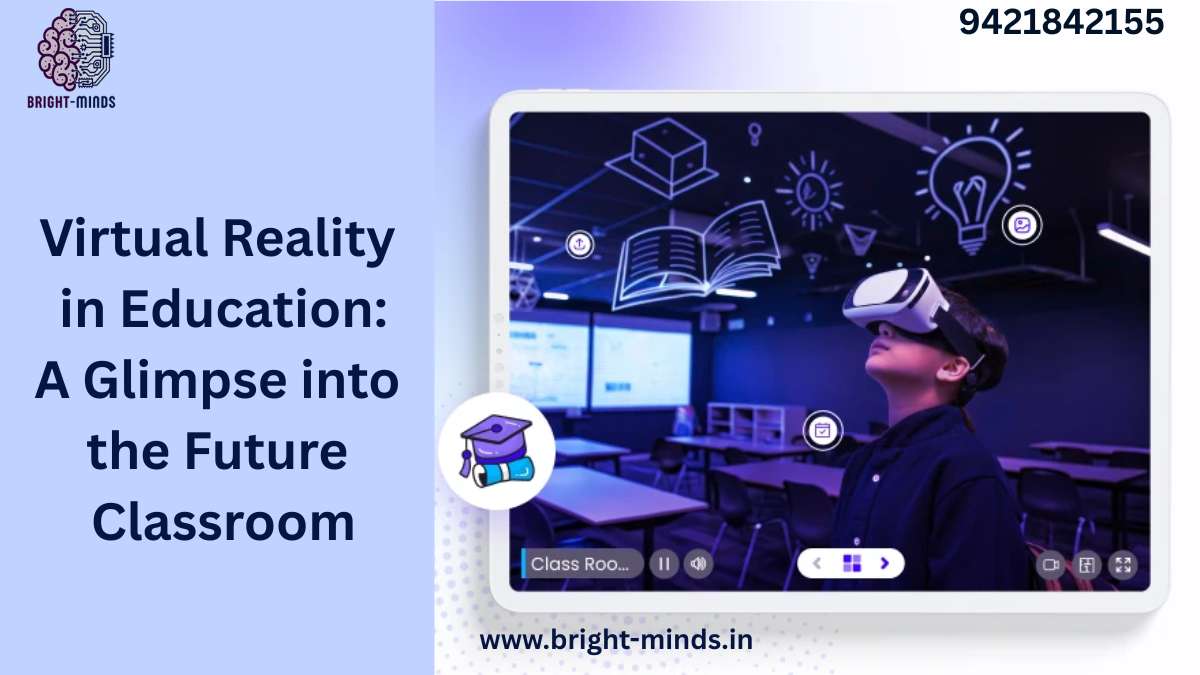What if learning wasn’t limited to four walls and a whiteboard?
What if students could walk through ancient Rome, explore the human heart from the inside, or experiment in a virtual chemistry lab—all without leaving their desks?
Welcome to the future of learning—where Virtual Reality (VR) is not just a buzzword but a revolutionary tool that’s reshaping how we teach, train, and grow.
Whether you’re a curious parent, an educator, a corporate leader, or a lifelong learner, now is the perfect time to explore how VR in education is changing the game—and how you can be part of it.
🎓 What Is Virtual Reality in Education?
Virtual Reality (VR) in education refers to the use of immersive, computer-generated environments that simulate real or imaginary worlds to enhance learning.
With VR headsets and apps, students can:
- Explore complex subjects hands-on
- Visualize abstract concepts
- Engage in interactive simulations
- Experience situations otherwise impossible in traditional classrooms
And it’s not just for kids. Professionals across industries—from healthcare to finance—are embracing VR to upskill, train, and collaborate.
📊 Market Trends: VR Is Growing Fast in EdTech
The VR education market is booming—and it’s not slowing down anytime soon.
According to Global Market Insights, the VR in education market is expected to surpass $20 billion by 2030, driven by the rise in remote learning, smart classrooms, and immersive corporate training.
Big players like Google, Meta, Microsoft, and Lenovo are investing heavily in educational VR tools, while schools and universities around the world are building VR labs and immersive curriculum modules.
💡 Fast Fact:
Research shows that students retain 75% more information through VR-based learning compared to traditional methods.
🧪 Real-World Applications of VR in the Classroom
Here’s how VR is being used in real educational environments today:
🧬 1. Science Labs Without Risk
Students can explore the solar system, dissect virtual frogs, or conduct chemical reactions—all safely and cost-effectively.
🌍 2. History Comes to Life
Imagine walking through the pyramids of Egypt or watching the American Revolution unfold around you. VR makes history immersive and unforgettable.
💬 3. Language Learning
With VR, learners can practice real-life conversations with avatars or immerse themselves in virtual cities to enhance fluency and confidence.
👩⚕️ 4. Medical Training
VR is revolutionizing how medical students learn anatomy, surgery, and patient care through lifelike simulations that reduce error and increase confidence.
🏢 5. Corporate Training
From customer service to leadership development, companies use VR to create real-world job scenarios for training without real-world consequences.
💼 Why It Matters for Companies and Employees
For businesses, integrating VR into training offers clear benefits:
- Scalable training programs for remote or global teams
- Higher retention through immersive engagement
- Risk-free simulations for dangerous or sensitive scenarios
- Faster onboarding and skill development
🏢 Example:
A retail chain trains employees using VR to handle customer complaints, inventory issues, and point-of-sale systems—before they even step into a store.
This kind of hands-on learning increases employee confidence, improves performance, and reduces turnover.
🧠 The Psychology Behind VR-Based Learning
Why is VR so effective for learning?
✅ Multi-sensory engagement – Learners interact through sight, sound, and movement.
✅ Active participation – It’s not passive content consumption—students do the learning.
✅ Safe space for mistakes – Learners can experiment and fail without consequences, encouraging growth.
✅ Increased motivation – Gamified environments and achievements keep learners hooked.
All these factors make VR a powerful tool to support a growth mindset, promote financial literacy, and build long-term success—starting with better learning.
👨👩👧👦 How to Start: Tips for Educators, Parents & Organizations
Ready to dip your toes into VR in education? Here’s how to begin:
🎒 For Parents & Students
- Try affordable VR headsets like Google Cardboard or Meta Quest.
- Use apps like Titans of Space, Google Expeditions, or Mondly VR for immersive lessons.
- Combine traditional study methods with VR for a richer experience.
🏫 For Educators & Schools
- Start with pilot programs in STEM or history classes.
- Use free VR content from platforms like Nearpod VR, zSpace, or VictoryXR.
- Encourage collaborative learning with shared VR experiences.
💼 For Companies
- Partner with VR EdTech providers to create custom learning paths.
- Invest in employee upskilling with immersive training modules.
- Monitor learning outcomes using built-in analytics tools.
🚀 Final Thoughts: The Future Is Here
The future classroom isn’t just high-tech—it’s high-impact.
Virtual Reality is more than just a trend; it’s a transformative force in education and professional development. It empowers learners of all ages to explore, experiment, and excel—on their own terms.
Whether you’re helping a child learn math in 3D, onboarding a new employee, or pursuing your own lifelong learning journey, VR opens a world of possibilities.
You may also like this:-

